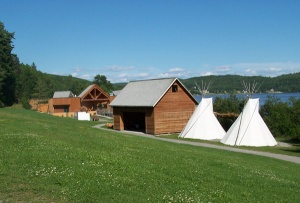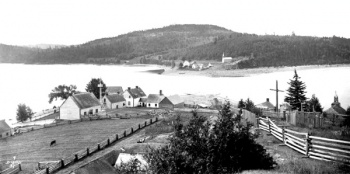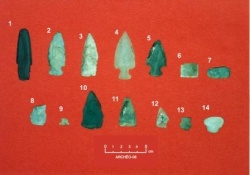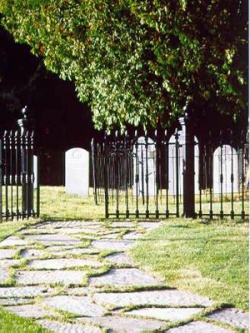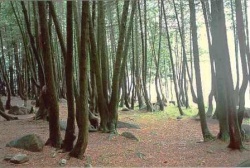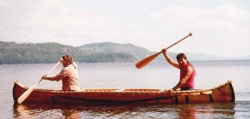Fort Témiscamingue on Obadjiwan Point: a Place for Meeting and Exchange
par Neveu, Lily Pol
The Fort Témiscamingue-Obadjiwan National Historic Site of Canada illustrates the important role the fur trade once had in the Canadian economy. It also testifies to the Franco-British rivalry for control of the fur industry. The industry also played a key role in defining the cultural perception the inhabitants of the Témiscamingue region had of themselves, regardless of whether they were Native Anishinabe (Algonquin) or French or English settlers. The Témiscamingue site has been a centre of human activity for about 6,000 years and various peoples have used it as a meeting place for making exchanges: the Anishinabe; the English and French voyageurs (NOTE 1) who plied the fur trade; as well as the French Canadian settlers of the Témiscamingue region. Today the site is a tourist attraction jointly managed by Parks Canada and the Timiskaming First Nation. This partnership is based on an agreement that is on the verge of being finalized. The objective of the project is to offer visitors a multi-cultural interpretation program.
Article disponible en français : Fort-Témiscamingue-Obadjiwan : lieu de rencontres et d'échanges
The Location of Fort Témiscamingue on Obadjiwan Point
Fort Témiscamingue-Obadjiwan is located in North-western Quebec, on the Quebec-Ontario border. It is on a promontory on Lake Timiskaming's 110-kilometre lakeshore that creates a tight narrows, where the east and the west shores of the lake are less than 250 metres [820 feet] apart. It is actually from this unique geographical feature that the site gets its name, for in Algonquin, Obadjiwan not only means "narrows" but also "meeting place." Halfway between Hudson Bay and the St. Lawrence River, Lake Timiskaming is essentially a widening of the Ottawa River. The site's unobstructed view of the waterway is why in the past it was considered to be of considerable strategic importance. It also explains why the Anishinabe and then the French and the English successively made use of the site, as well as to why the descendants of all three groups consider Lake Timiskaming to be an essential part of their history and cultural heritage.
Set in a scenic area of exceptional natural beauty, the Fort Témiscamingue site affords visitors exceptional views of the landscape, including a pebble beach on the shores of majestic Lake Timiscaming, as well as a hiking trail through the "Enchanted Forest." At the interpretation centre there is an interactive historical exhibit that includes video presentations. Located on the original site of various former trading company buildings, the structures housing the interpretive displays offer a complete historical showcase of the Fort.
A Meeting Place throughout the Ages
Archeological digs carried out between 1992 and 1995 revealed that Native people have lived in and around Obadjiwan Point for ages. Arrowheads, tools, and fragments of cut stone discovered at the site prove that the Témiscamingue Anishinabe have been on the scene for over 6,000 years. Its easily identified location and accessible beaches made it a favourite Anishinabe gathering place where they would also meet with representatives from other Native tribes. Other stones found on the site originating from Cree and Inuit lands to the north, as well as from the Great Lakes region in the southwest testify to the mobility of Native communities before the arrival of the Europeans and to the importance of exchanges between these groups.
With the arrival of French settlers, who came to the region to develop the fur trade, the Anishinabe way of life was forever changed. The first trading post on Lake Timiskaming was built between 1679 and 1688 at the mouth of the Montreal and Mattabetchwan rivers by the Compagnie du Nord [North Company], a New France-based, merchant-owned corporation. The firm's objective was to use the Lake Timiskaming operations to compete with the trading posts that the London-based Hudson's Bay Company had recently erected on the shores of James Bay and Hudson Bay. (The early Timiskaming trading post is now completely under water due to the dams built on the lake at the beginning of the 20th century). Then, later in 1720, the North Company established a second trading post where Fort Témiscamingue now stands. After the British conquest of New France, the post passed into the hands of the North-West Company. It was a firm owned by Scots living in Montreal, which hired a great many French-Canadian workers. As the territory surrounding Lake Timiskaming was very rich in furs, the North-West Company became engaged in a fierce competitive struggle with the Hudson's Bay Company for domination of the fur trade industry.
During this period, an interdependent relationship serving the interests of both parties was established between the Native peoples of the Témiscamingue region and the trading post's employees, who were of European origin. These companies needed the Native peoples and their knowledge of the territory, in order to develop the fur trade. In exchange, the companies supplied the Anishinabe trappers with provisions and equipment that would enable them to winter in the region's harsh climate. The relative frequency of marriages between the settlement's European men and Native women was an indication of the favourable relations that prevailed between Natives and non-Natives at the time. Today, family names-such as Mackenzie, Chevrier, King and Polson-are widespread among the Témiscamingue Natives and testify to the legacy of the trapper-voyageur era. The Anishinabe were also hired to build canoes; to transport furs and merchandise between Montreal and the Fort (in the company of French-Canadian voyageurs); and to work as labourers around the post.
In 1821, Fort Témiscamingue was taken over by the Hudson Bay Company, which had acquired the North-West Company. Thus began the Hudson Bay monopoly over the fur trade across the entire territory of present-day Canada. The Hudson Bay Company would close its Fort Témiscamingue trading post in 1902, leaving behind a complex of impressively sophisticated buildings-a lasting testimony to the power of its commercial empire. Following the company's departure, logging became the main local economic activity. And then, with the arrival of French-Canadian settlers and the founding of the first village at Baie des Pères in 1886 (today the town is known as Ville-Marie and is located about five kilometres from the Fort) agricultural development of the region would begin.
This movement to settle the region was initiated several years after the earliest Sulpician missionaries first arrived in 1836 to convert the Natives. The Sulpicians settled right next to the trading post and built a small chapel just outside the commercial district. The Missionary Oblates of Mary Immaculate (OMI) subsequently took over the reins and founded the St. Claude Mission across the lake from the trading post. Upon noticing the area's rich, fertile soil, Father Moffet, a member of the order, began to promote what later become known as the first settlement in the region. The arrival of several settlers marked the beginning of the consolidation of the non-Native population's hold on the region.
Ever-changing Relations
In 1851, the colonial government set aside an Indian reserve at the head of Lake Timiskaming where members of the Timiskaming First Nation still live today, right beside the village of Notre-Dame-du-Nord [Our Lady of the North]. The interdependent relationship between Natives and non-Natives gradually evolved into the dependence of the former upon the latter. Confinement to a cramped reserve radically transformed the Anishinabe and their way of life. The European diseases brought by the non-Natives decimated the population. Subsequently, sending the Anishinabe children to non-Native residential schools contributed to the loss of their culture and language. In the end, the Anishinab began to perceive non-Native settlement of the region as having dispossessed them of their own territory. According to written sources, the nomination of Anishinabe chiefs still took place on the Obadjiwan site until 1880. After this date, the Anishinabe stopped using Obajiwan Point and the site, on which so many spiritual ceremonies had taken place over the ages, ceased to be a Native meeting place.
From that point onward, the non-Natives took full possession of the Témiscamingue meeting place and began to create their own legends that would eventually come to be associated with the site. The Fort became a recreation centre where people came to swim, party, and picnic. In 1924, for the first time, Ville-Marie residents used the site to celebrate Saint-Jean-Baptiste Day (the holiday commemorating the patron saint of French-Canadians). Given that the trading post buildings had already began to deteriorate, the local people decided to destroy them completely. Although the last building disappeared in 1962, Témiscamingue locals have not forgotten the trading post of yesteryear and still call the site the "Old Fort." Furthermore, the site's two Christian cemeteries have also reinforced the cultural identity value associated with the location. Missionaries, voyageurs associated with the fur trade, and over one hundred Algonquin converts are buried in the Catholic cemetery. The final resting place of trading post managers and clerks from the two English companies is at the Protestant cemetery, right next to the Catholic one.
From "Old Fort" to Fort Témiscamingue-Obadjiwan: The Making of a Heritage Site
Several of the steps taken by local residents to preserve the memory of the location testify to the importance of the Fort in their eyes. In 1931, following initiatives undertaken by the Société d'Histoire du Témiscamingue [Témiscamingue Historical Society] and the Chambre de Commerce de Ville-Marie [Ville-Marie Chamber of Commerce], the Historical Sites and Monuments Board of Canada commemorated the historical importance of Fort Témiscamingue by designating it a National Historic Site. Later, in 1967, on the occasion of the centennial of the Canadian Confederation (at the request of the Abitibi-Témiscamingue Regional County Municipality), the Board reaffirmed the substantial historical value of the site by erecting a cairn with a commemorative plaque at the top. Then, during the 1967 - 1970 period, Donat Martineau of the OMI wrote a historical account of the Fort and submitted his research project to Indian and Northern Affairs Canada, which, at the time, was in charge of Parks Canada. This initiative convinced Parks Canada to purchase the site from the OMI in 1970, so they could oversee its development as a historic heritage site. At this point, archaeological digs were undertaken, in order to determine the exact location of the buildings constructed by the successive trading companies that had operated on the site. Parks Canada also set up a large tent to house a temporary exhibit that included film presentations on the fur trade. Finally, a team of interpretive guides began to offer guided visits of the site, which were intended for both tourists and students. The tours began spite of the fact that only a few vestiges of the fort and the trading posts had been unearthed.
At the time, interpretation activities focused on the history of the non-Natives, presenting topics such as the arrival of the Europeans, the operation of the fur trade, and the lifestyle of English-speaking company factors, trading-post employees and French-Canadian voyageurs. Admission to the site was free and the non-Native locals became regular visitors to the site, largely to take advantage of the amenities of the historical park's beach, complete with its own lifeguard. Today, visitors still continue to come to the site for picnics and to visit the legendary "Enchanted Forest", which is so named because of the trees that have been bizarrely shaped by the wind. The present cedar forest replaced the original forest composed of the red, white, and grey pines that were cut down to build the trading post.
In 1990, the Municipality of Duhamel-Ouest and Parks Canada came to an agreement as to how to develop the site. Thus, a second series of archaeological digs were undertaken between 1992 and 1995, in order to better understand the lifestyle of the trading post employees and to gather information as to how to best reconstruct certain of the original infrastructures. The goal was to turn the fort into a major tourist attraction. At this point, a surprising discovery was made: Native artefacts were uncovered on the site. This demonstrated that the Anishinabe of Lake Timiskaming had frequented the site during a period that had lasted for more than 6,000 years. Although Parks Canada's 1997 commemorative integrity statement refers to this important discovery, any mention of it was left out of national-level historical communiqués intended for priority distribution to the general public. The fact that the Native peoples had used the site for millennia was highlighted in the exhibit, but the historic park's interpretation program generally accorded it little importance.
In 1998, Parks Canada began a series of works to develop Fort Témiscamingue as a historic heritage site. The project agenda included the construction of an interpretation centre, the redesigning of site's layout (with the objective of recreating the feel of the long-lost trading post), as well as the construction of an exhibit. However, during the excavations, further vestiges of Native origin were discovered-namely some Algonquin burial grounds. Bones were found that dated from the era of the fur trade and pointed to the existence of a third Algonquin cemetery located right beside the two Christian graveyards. This discovery sent shock waves across the region and had a long-lasting effect on the relations between the Native and non-Native communities. Now that the significance of the site's Anishinabe vestiges were known and recognized by everyone, relations between the two communities became very tense indeed. The Timiskaming First Nation even decided to occupy the site, barricading access routes and organizing demonstrations. As a result, the site was closed to the public for two years. And so, Parks Canada and the Timiskaming First Nation took joint responsibility for the supervision of the development of the location.
During this period, the non-Native population suspected the Native people of attempting to "seize the Old Fort" that belonged them as well. This gesture on the part of the Natives outraged the non-Native population, for they knew that their forbearers had also frequented the Fort site for many generations. As for the Natives, they were angry because they had been excluded from the process of authenticating an integral part of their ancestral territory; a site upon which several thousand years of Native activity had left its mark. Finally, in 2000, the two communities negotiated a sort of partnership and re-opened the site to the public. At sunrise on the designated morning, the exhumed Native bones were returned to the earth in a private ceremony organized by the Timiskaming First Nation elders. Then, site development work was able to resume. All in all, this episode served as a sort of catalyst, enabling the two parties involved to establish more harmonious relations.
The Current Situation
Following these events, the Fort Témiscamingue-Obadjiwan site was developed in accordance with a joint-management policy. A final agreement between Parks Canada and the Timiskaming First Nation has not yet been reached. Once concluded, it will mark a first in Canada: a heritage trust agreement in which the two parties, Parks Canada and the Timiskaming First Nation, will jointly administer a site. Activities taking place at Fort Témiscamingue-Obadjiwan during the summer months are already being managed in accordance with the new policy. These include activities associated with traditional Algonquin culture, such as the building of birch bark canoes, baskets and wigwams, as well as historical presentations focusing on the fur trade and on the lives of the non-Native employees and managers of the trading post.
While the heritage interpretation of Fort Témiscamingue-Obadjiwan is undergoing constant transformation, the site's role as significant, central place for meeting and exchanging persists. The Fort's dynamic and sometimes stormy history provides an example of the kind of dialogue that has occurred between the Native and the non-Native communities in the region. It is a dialogue that has helped introduce a spirit of harmonious coexistence and fostered better mutual understanding. The site has also become a means of convey to the general public, the interdependent nature of the bonds that have long united the Native peoples with the French and English-speaking communities in the Témiscamingue region.
Lily Pol Neveu
M.A. Master in Philosophy, Laval University
Heritage Site Interpretive Guide, Fort
Témiscamingue-Obadjiwan (2003-2005)
The author wishes to thank Jean Cotton, Marlyn Rannou, and Karl Chevrier.
NOTES
1. The term "voyageur" is italicized and left in French in order to distinguish those hired by fur-trading companies from the explorers intent on discovering new lands.
BIBLIOGRAPHY
Allan Mitchell, Elaine, Fort Timiskaming and the Fur Trade, Toronto, University of Toronto Press, 1977, 306 p.
Bousquet, Marie-Pierre, « Quand nous vivions dans le bois » Le changement spatial et sa dimension générationnelle : les Algonquins du Canada , Thèse de doctorat en anthropologie, Université Laval, 2002.
Courcy, Simon, « Fort Témiscamingue : étude de potentiel de la collection d'artefacts archéologiques », Bulletin de recherches, Environnement Canada, Service canadien des parcs, n°274, mars 1989, 15 p.
Côté, Marc, « L'occupation amérindienne au Témiscamingue : l'exemple du Lieu historique national du Canada du Fort-Témiscamingue (Obadjiwan), une présence multi-millénaire », Recherches amérindiennes au Québec, vol. XXXVI, n°1, 2006, p. 7-22.
Côté, Marc, et Gaëtan Lessard (dir.), Traces du passé. Images du présent. Anthropologie amérindienne du moyen-nord québécois, Rouyn-Noranda, CÉGEP Éditeur, 1993, 213 p.
Desgagné, Anne, « Le fort Témiscamingue, un lieu d'échange dans le réseau de la traite des fourrures : nouvelles avenues de recherche », Bulletin de recherches, Patrimoine canadien, Parcs Canada, n°306, juin 1994, 14 p.
Martineau, Donat, O.M.I., Le Fort Timiskaming, Rouyn-Noranda, La Société Historique du Témiscamingue, La Société Saint-Jean-Baptiste de l'Ouest Québécois, 1969, 76 p.
Morrison, James, Report on Aboriginal Presence and Burial Grounds at Obawjewong/Fort Temiscamingue - Final Report, préparé pour The Algonquin Nation Secretariat and Parks Canada, Quebec region, Winnipeg, 2002.
« Portail régional du Témiscamingue », Société de développement du Témiscamingue. [En ligne] (Consulted on October 12th, 2006).
Riopel, Marc, Le Témiscamingue. Son histoire et ses habitants, Québec, Fides, 2002, 366 p.
Riopel, Marc, De la Baie-des-Pères à Ville-Marie, 1886-1986, Ville-Marie, Comité du Centenaire de Ville-Marie, 1986, 307 p.
« Timiskaming
First Nation - Obadjiwan, National Historic Site », Algonquin Nation
Secretariat. [En ligne] (Consulted on
November 22nd,
2006).
Additional DocumentsSome documents require an additional plugin to be consulted
Images
-
 Canot d'écorce termin
Canot d'écorce termin
é -
 Carol King et Karl Ch
Carol King et Karl Ch
evrier sur le t... -
 Construction d'un can
Construction d'un can
ot d'écorce -
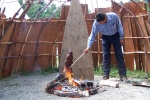 Cuisson d'un castor d
Cuisson d'un castor d
ans un wigwam
-
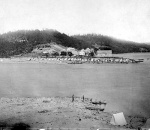 Fort Temiscamingue. P
Fort Temiscamingue. P
ièce (reliée) F... -
 Guide touristique © P
Guide touristique © P
arcs Canada, TO... -
 La forêt enchantée
La forêt enchantée
-
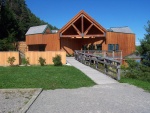 Le centre d'interprét
Le centre d'interprét
ation du fort
-
 Le cimetière protesta
Le cimetière protesta
nt -
 Le Fort Témiscamingue
Le Fort Témiscamingue
en 1886. © Soc... -
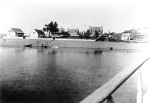 Le fort Témiscamingue
Le fort Témiscamingue
vu du météor ... -
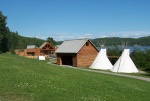 Le site du centre d'i
Le site du centre d'i
nterprétation
-
 Mission des Oblats pr
Mission des Oblats pr
ès du fort Témi... -
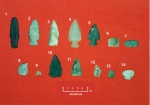 Photo d’artéfacts arc
Photo d’artéfacts arc
héologiques, ti... -
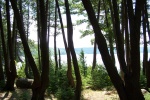 Photo de la Forêt Enc
Photo de la Forêt Enc
hantée © Parcs ... -
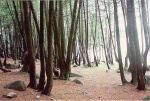 Photo de la Forêt enc
Photo de la Forêt enc
hantée © Parcs ...
-
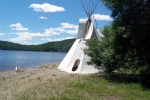 Tipi construit au For
Tipi construit au For
t © Parcs Canad... -
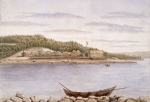 Vue de la Mission cat
Vue de la Mission cat
holique romaine... -
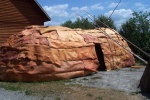 Wigwam en écorce de b
Wigwam en écorce de b
ouleau © Parcs ... -
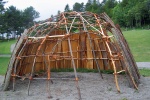 Wigwam en rond
Wigwam en rond
Vidéos
-
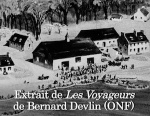 Extrait du film «Les voyageurs» de Bernard Devlin, 1964 (ONF)
Extrait du film «Les voyageurs» de Bernard Devlin, 1964 (ONF)
-
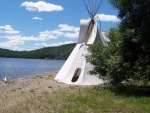 Lieu historique du Fort-Témiscamingue-Obadjiwan
Lieu historique du Fort-Témiscamingue-Obadjiwan
Documents PDF
-
 Énoncé d’intégrité commémorative
Énoncé d’intégrité commémorative
-
 Extraits du Journal du Fort-Témiscamingue écrits par les chefs de poste ou commis
Extraits du Journal du Fort-Témiscamingue écrits par les chefs de poste ou commis

